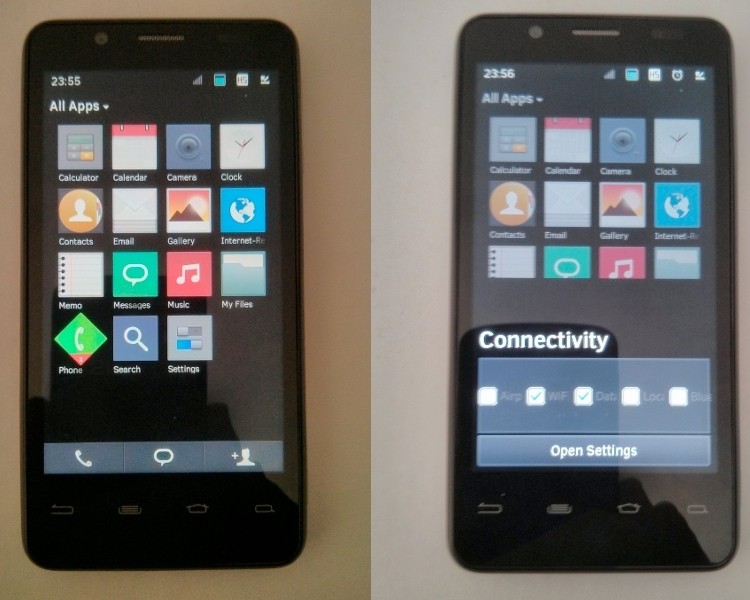Intel is cooking up its own smartphone overlay for use in upcoming Tizen-based smartphones and possibly Android as well. Codenamed Obsidian, Ars Technica recently got a hold of several early screenshots and videos of the software in action, showing some of its design elements and gesture implementation.
Although the report notes Obsidian is still fairly early in development -- in other words you shouldn’t take this as the final design -- the current UI follows the flat design trend with boxy icons displayed on a grid that more closely resembles Android and even Windows Phone over iOS -- at least for now if rumors about iOS 7 pan out.
A strip across the bottom of the screen is home to three soft keys for calls, messaging and contacts. Swiping to the left brings up what appears to be a favorite or recent contacts screen, while another swipe in that direction brings up the full list. A grid of app icons is available to the right and although it’s not shown in the videos, apparently you can sort them so that either all apps or just a subset of them are displayed at a time.

A couple of interesting design choices can be seen in the way Obsidian handles notifications and quick access to certain app data. For the first, Intel rotates icons 45 degrees so that they turn into a diamond shape with the bottom corner painted red along with the corresponding number for unread notifications.
Meanwhile, taping and holding your finger over an icon for a second or so brings up a widget like “peek panel” that allows you to perform basic functions without launching the actual app. For instance, the video shows how to set up an alarm this way and quickly switch wireless radios on or off by tapping and holding the settings icon.
Check out the videos of Obsidian UI in action over at Ars Technica.
For those who may not know, the Tizen platform this is initially intended for is an open source operating system being backed by the Linux Foundation, Samsung, Intel and a handful others. Although there are no Tizen devices on the market yet, Samsung has already said it plans to release a high end model as early as August 2013. The idea is to lessen the industry’s reliance on Android and Google’s tight control of the platform.
https://www.techspot.com/news/52843-early-build-of-intels-phone-ui-obsidian-shown-off-in-video.html